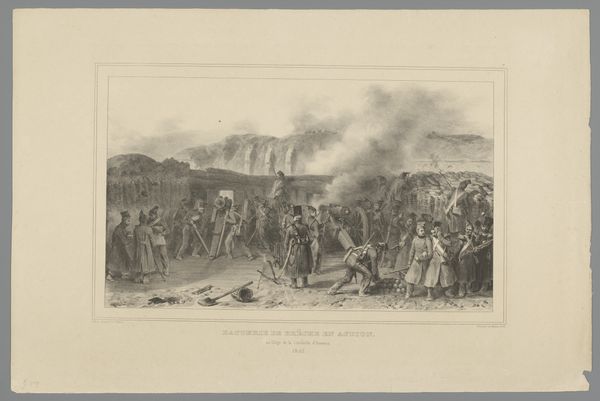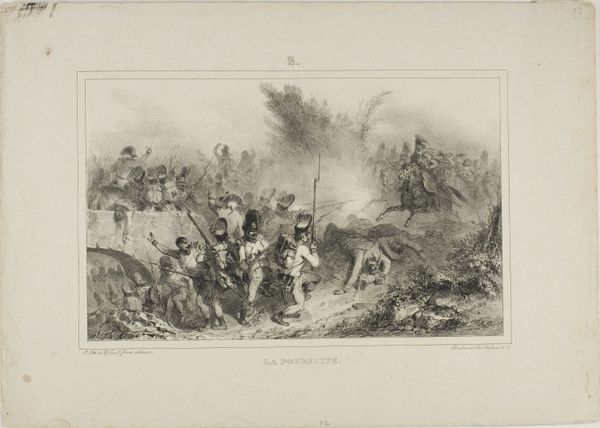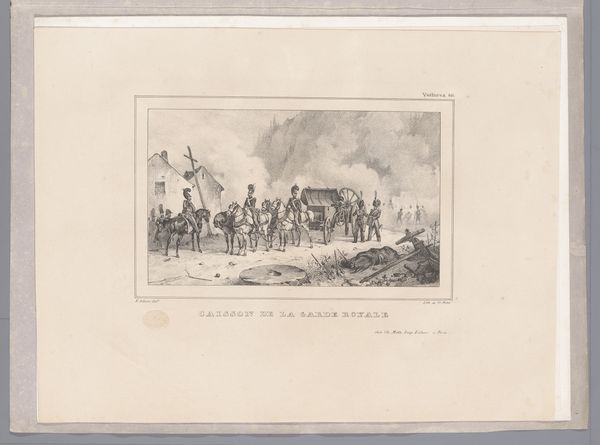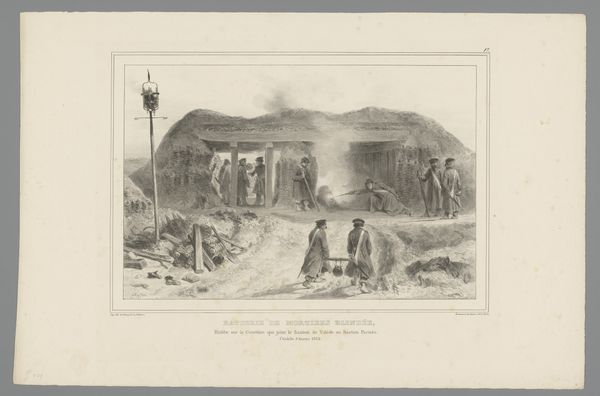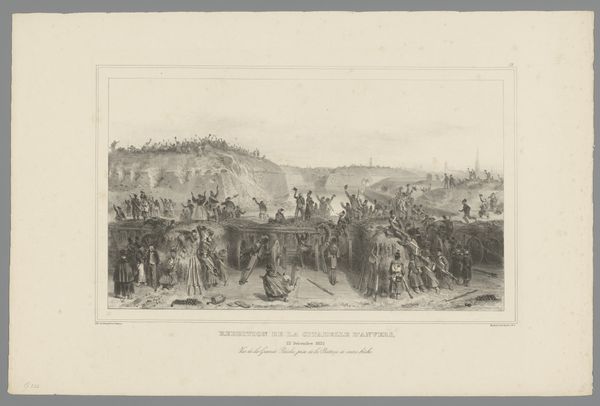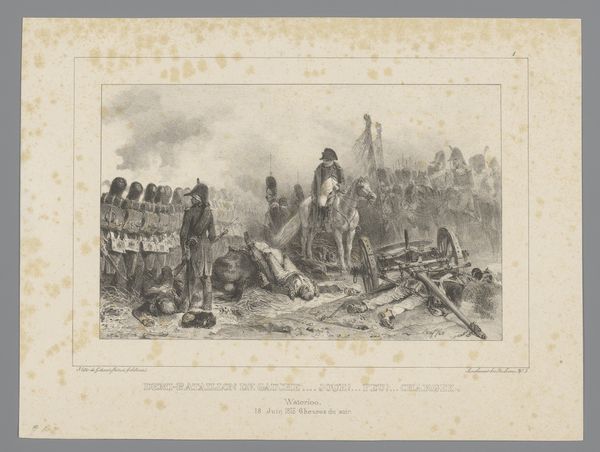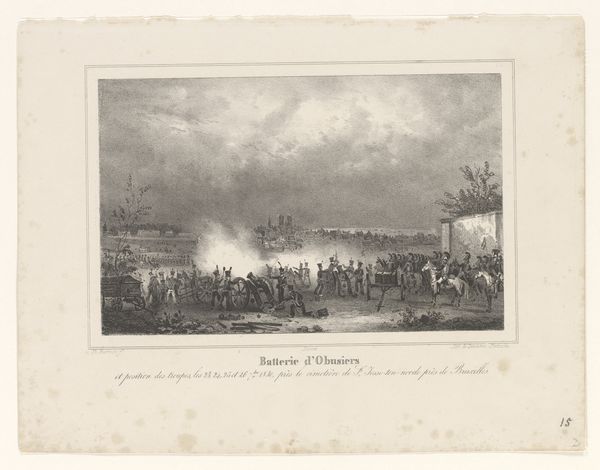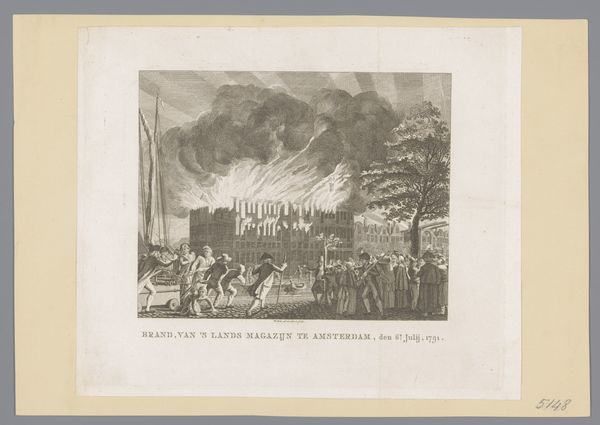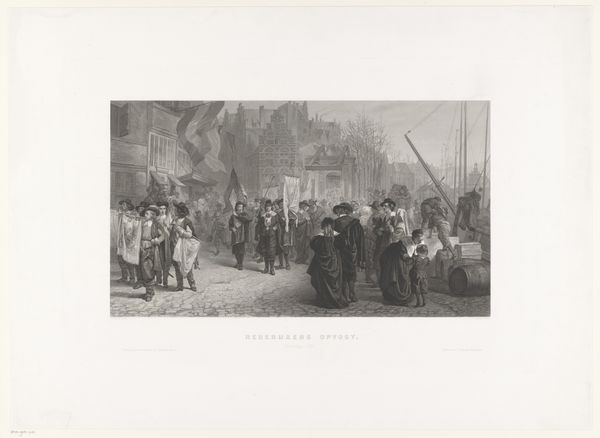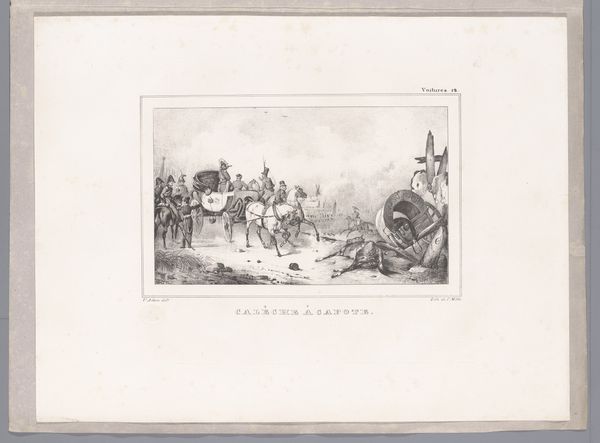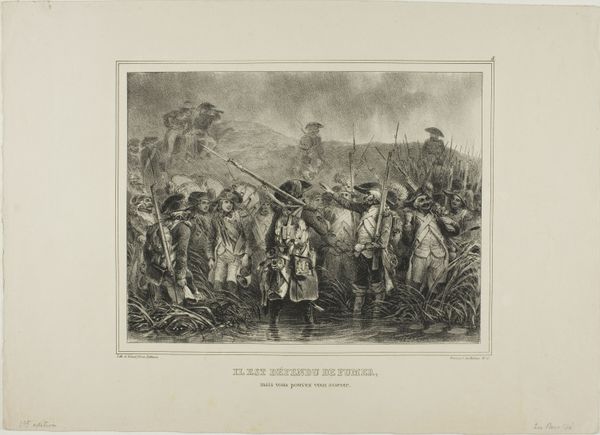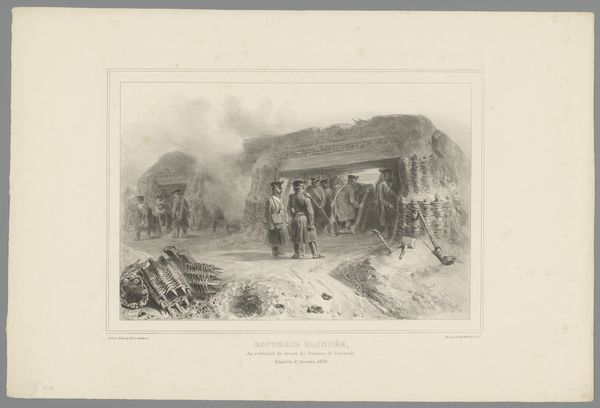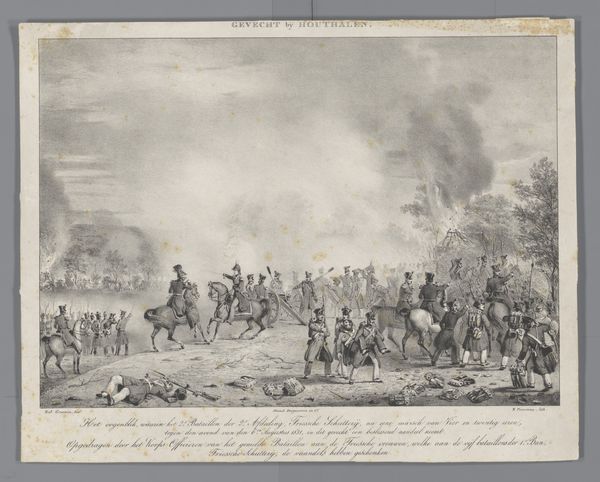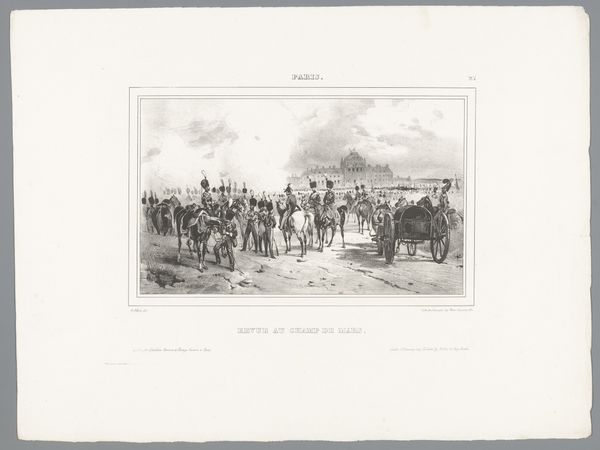
drawing, print, etching
#
drawing
# print
#
etching
#
history-painting
#
realism
Dimensions: height 362 mm, width 550 mm
Copyright: Rijks Museum: Open Domain
Curator: Here we have "Soldaten graven een loopgraaf, 1832," which translates to "Soldiers dig a trench," a print rendered by Auguste Raffet, likely from 1833, currently held at the Rijksmuseum. Editor: The eye is immediately drawn to the figures' intense activity amidst what appears to be a chaotic environment. The use of monochromatic etching techniques accentuates a feeling of struggle. Curator: Indeed. Note how Raffet's manipulation of line and value emphasizes the backbreaking labor suggested by the slumped postures of the soldiers and their strained movements, a visual articulation of arduous work. The composition is notably structured. Editor: Considering the material constraints involved in etching, I wonder about the accessibility and reach of this work in depicting scenes of labor. How many prints like this would need to be made to portray labor practices effectively? Curator: That is fascinating. Consider the rigorous and repetitive techniques utilized for producing multiple editions. This work, seemingly aligned with realism, transcends mere surface representation; it's a detailed articulation of volume and mass, the very structure of things. The realism comes forth due to its subject, and its accessibility as print makes it fit within social contexts too. Editor: Looking closely, there's a certain contrast between the common labor undertaken and the authority implied in some figures in the fore, the soldiers watching them. I’m curious about the labor processes of trench digging during the 1830s and the ways it affected a society on the brink of revolution. This composition makes me consider if digging trenches was ever seen as 'fine art' given how Raffet depicted this event. Curator: What a provocative thought! Raffet prompts us to question distinctions between function and form. Editor: Exactly. Considering both Raffet's intention, and the broader landscape of artistic production at the time. I appreciate how this etching connects us to historical and labor experiences. Curator: The act of interpretation becomes a dynamic exchange with its structural components as well as it implications. Thanks for helping reveal those nuances today.
Comments
No comments
Be the first to comment and join the conversation on the ultimate creative platform.
